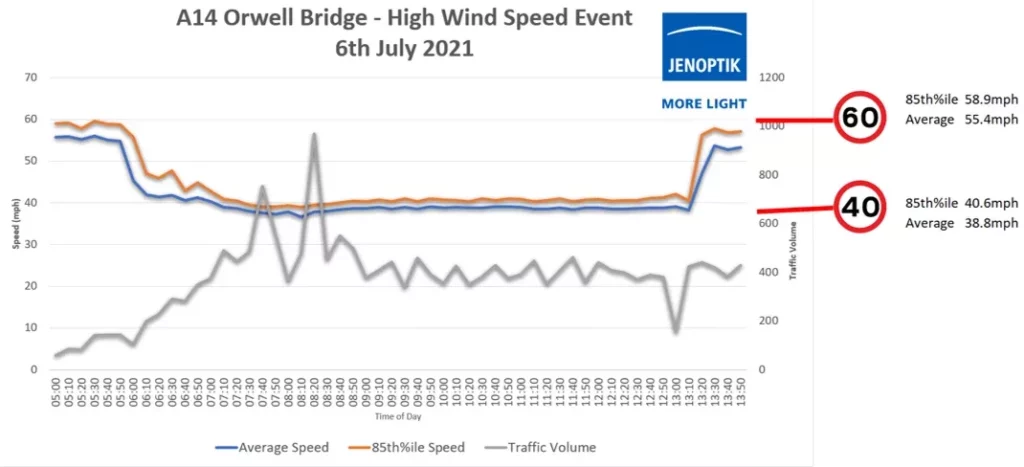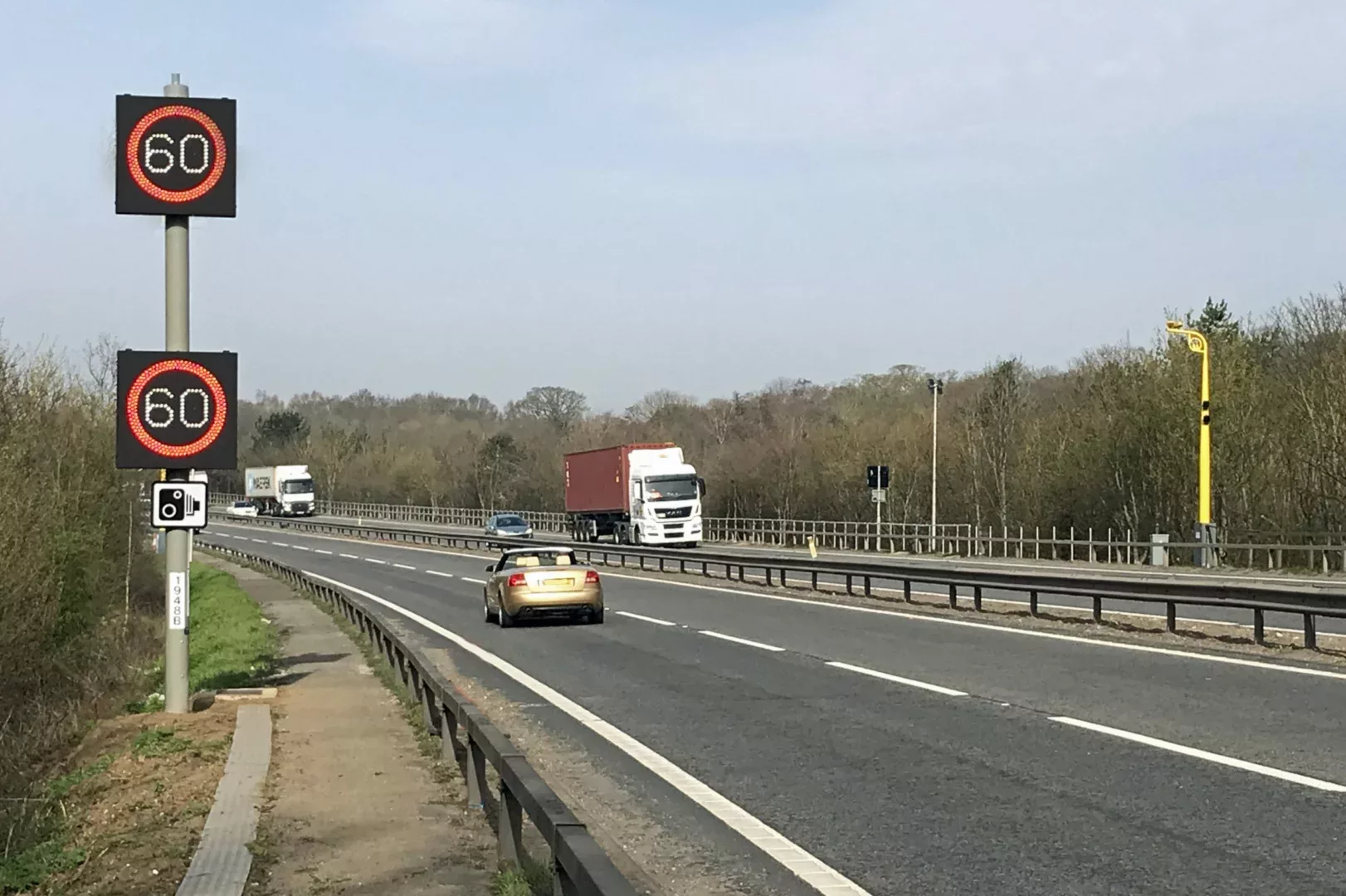Analysis of the driving speeds of vehicles crossing the Orwell Bridge in Suffolk has proved that drivers are adhering to dynamically reduced speed limits in windy weather.
The compliance is being attributed to average speed camera enforcement technology on the key stretch of the A14 which usually has a 60 mph limit, enforced by Jenoptik’s SPECS average speed system, but lowered to 40 mph in strong winds. Before the variable limit was in force, the bridge had to be closed completely in windy weather, now that only happens when gusts over 60 mph are expected. The variable message signs are provided by SWARCO.
Analysis by Jenoptik shows that drivers’ speeds always closely match the displayed speed limit on the road. For example, on 6 July when a 40 mph limit was in force, the average speed was 38.8 mph with 85% of drivers driving well below 41 mph. When the speed limit returned to 60 mph, the average speed of drivers returned almost immediately to 55.4 mph, with 85% of drivers still below 59 mph. It is widely understood that SPECS cameras result in safe and steady traffic flows, but this innovative scheme further proves that these benefits are still seen where the speed limit can be changed, due to prevailing conditions.

These figures prove that the new speed management plan is effective, because drivers are sticking to the safe limits. These limits were calculated during a year-long study of the bridge’s aerodynamic properties by City University of London, which tested the stability of vehicles depending on different wind directions. It concluded that reducing the vehicle speed limit would be safe for winds between 45mph and 60mph. This new solution has meant the bridge has been able to stay open on a number of occasions over the summer when previously it would have been shut, resulting in a very long diversion route. Local businesses say that each closure costs Ipswich’s economy £1 million, so any action keeping the bridge open supports the local economy.
“Since the completion of the new £1.5million upgrade of the Orwell Bridge in March, the new speed limit of 40mph has been implemented five times, three times in May, and twice in July,” explained National Highways Head of Planning and Development, Simon Amor. “On each occasion, the wind speeds were in excess of 50mph for sustained periods of time, which historically would have meant we would have had to close the bridge for safety reasons, and divert traffic through Ipswich.
“We are really pleased with the results so far and have been able to keep the bridge open, meaning more reliable journeys for drivers, local residents, businesses and hauliers heading to the port of Felixstowe, and less congestion in Ipswich. We will continue to monitor the new arrangements when they are in place.”
“It’s clear that keeping the bridge open during strong winds is only safe if people stick to the lower limits,” added Jenoptik UK’s Deputy Managing Director Geoff Collins. “Our flexible enforcement solution means that people do comply – the statistics prove it. There is a clear opportunity for similar schemes to be introduced on other bridges across the country, which would be good news for drivers on those routes, and for the economies and local areas affected when the key crossings are shut.”
(Picture – Jenoptik)

























